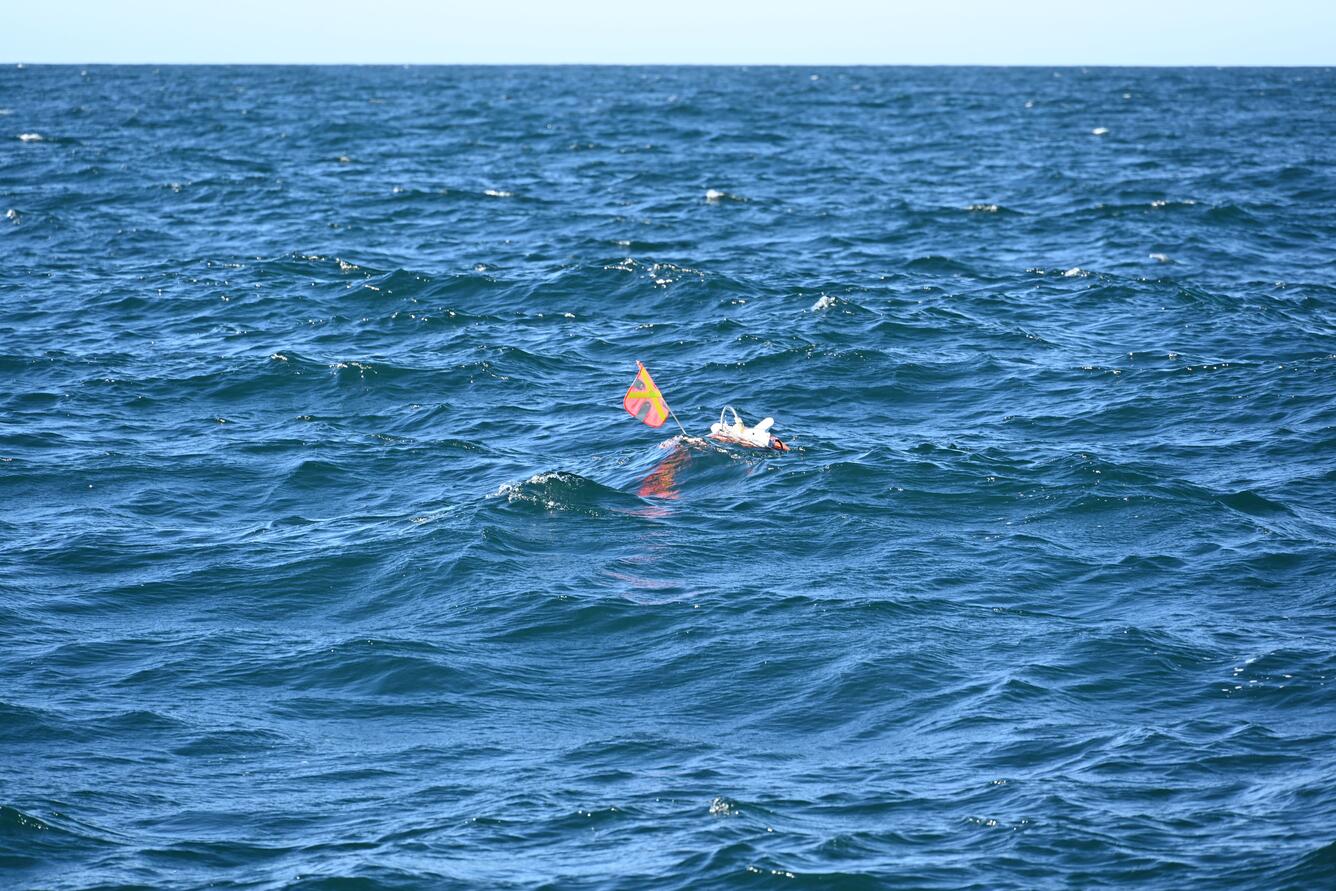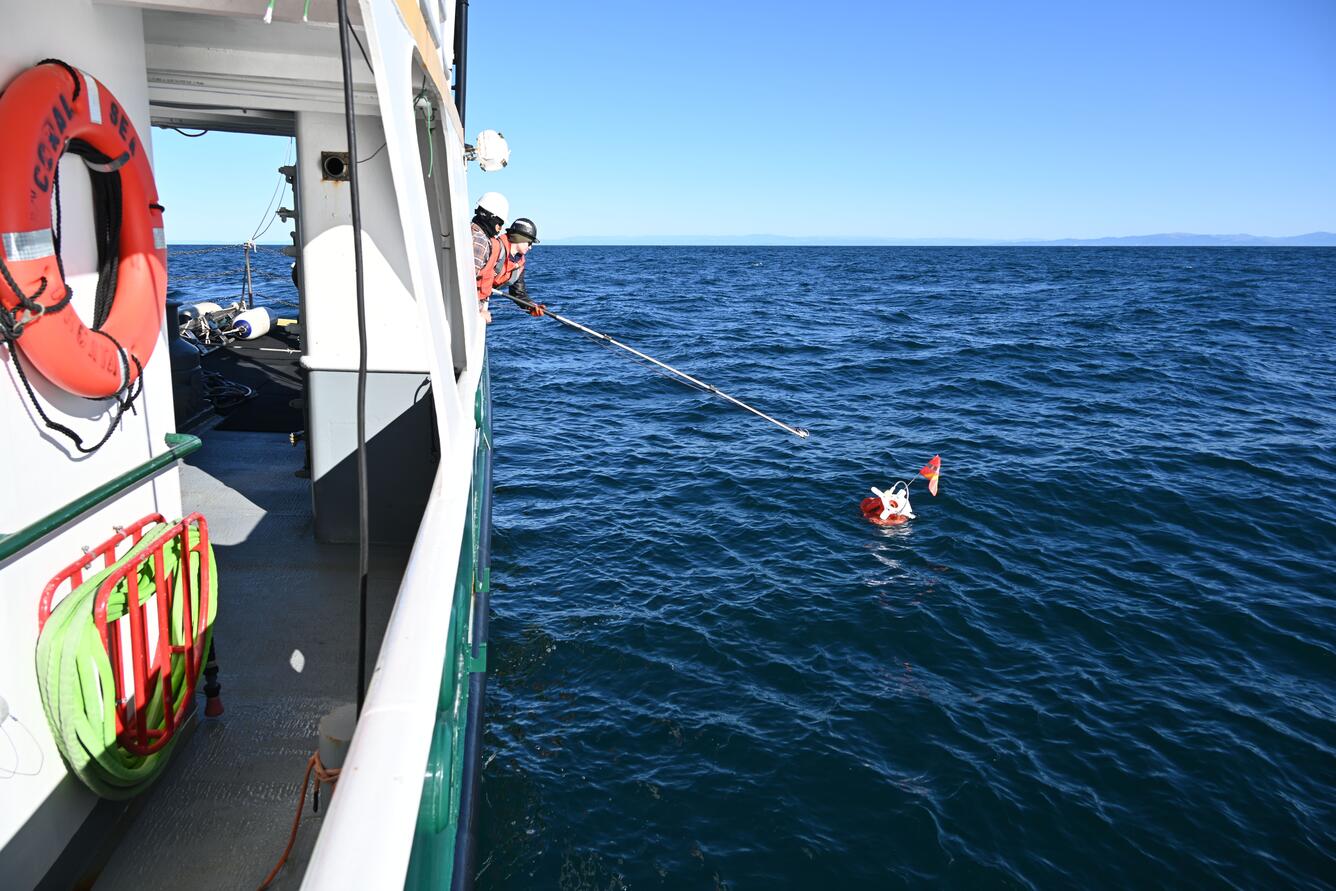Valuable Data Collected on M7.0 Earthquake Offshore Cape Mendocino, California
Successful deployment and retrieval of Rapid Response Ocean Bottom Seismographs represents significant advancement in natural hazards research
In the first real-world deployment of the new rapid response ocean bottom seismograph fleet, hundreds of aftershocks were successfully recorded on the seafloor offshore Cape Mendocino, California. These data will help seismologists better understand hazards—onshore and offshore—from future earthquakes in the region.
A magnitude 7.0 earthquake ruptured the Mendocino Transform Fault offshore Northern California on December 5, 2024. The USGS and colleagues from the Woods Hole Oceanographic Institution’s Ocean Bottom Seismic Instrument Center deployed our new fleet of rapid response ocean bottom seismographs just 11 days later—the fastest response in U.S. history.
This deployment was the first real-world use of the new, smaller instruments reserved for rapid response efforts. With the help of California State Polytechnic University, Humboldt’s research vessel Coral Sea, the instruments and valuable seismic data were recovered in January after recording hundreds of aftershocks on the seafloor for over 44 days.
Combining the ocean bottom seismograph data with data collected on land by the USGS Earthquake Hazards Program will significantly improve aftershock locations and other key measures of earthquake rupture mechanics. These data will be used to determine the size of the main rupture area, image fault zone structure, and model stress changes—all of which will improve the accuracy of seismic hazard models.
Earthquakes cost the Nation an estimated \$14.7 billion annually in building damage and associated losses according to a report released in 2023 by the USGS and the Federal Emergency Management Agency. The quick deployment of the ocean bottom seismograph fleet enables the recording of high-value seismic data that will improve future earthquake hazard models—providing the best quality data needed to protect lives and minimize the economic impact of these hazards.
Before the rapid response fleet was developed, it typically took over 100 days to deploy traditional ocean bottom seismographs, mainly due to a lack of instrument availability, their large size, and more complicated transportation requirements. The success of this first deployment and retrieval represents a significant advancement in natural hazards research.












